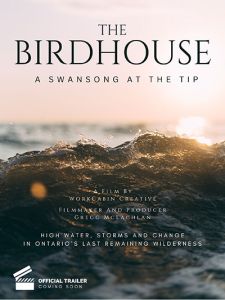

Nature documentary about bird research in Canada
WorkCabin Creative is wrapping up production on a new 15-minute documentary film about one of the most remote bird banding stations on Earth and the unique challenges faced living and working there.


Since 1960, the Long Point Bird Observatory has been operating a research station at the extreme eastern tip of Long Point, Ontario where scientists study bird

The new documentary, The Bird House, tells the story of the demise of a historic rustic wood house located at the tip that once housed the families of lighthouse keepers, and later housed biologists and volunteers working at the tip for LPBO.
In 2022, about 10,000 birds were banded at the tip, representing between 70 and 80 species.
The LPBO research station at the tip was the first in the Western Hemisphere. It began consistently collecting data and banding birds in 1960 and it led to the foundation of Birds Canada, a globally relevant non-profit charitable organization championing understanding, appreciation and conservation of birds.




